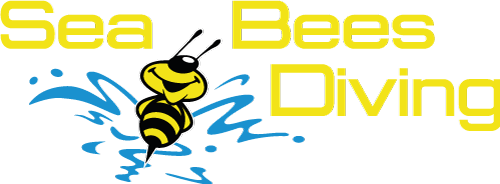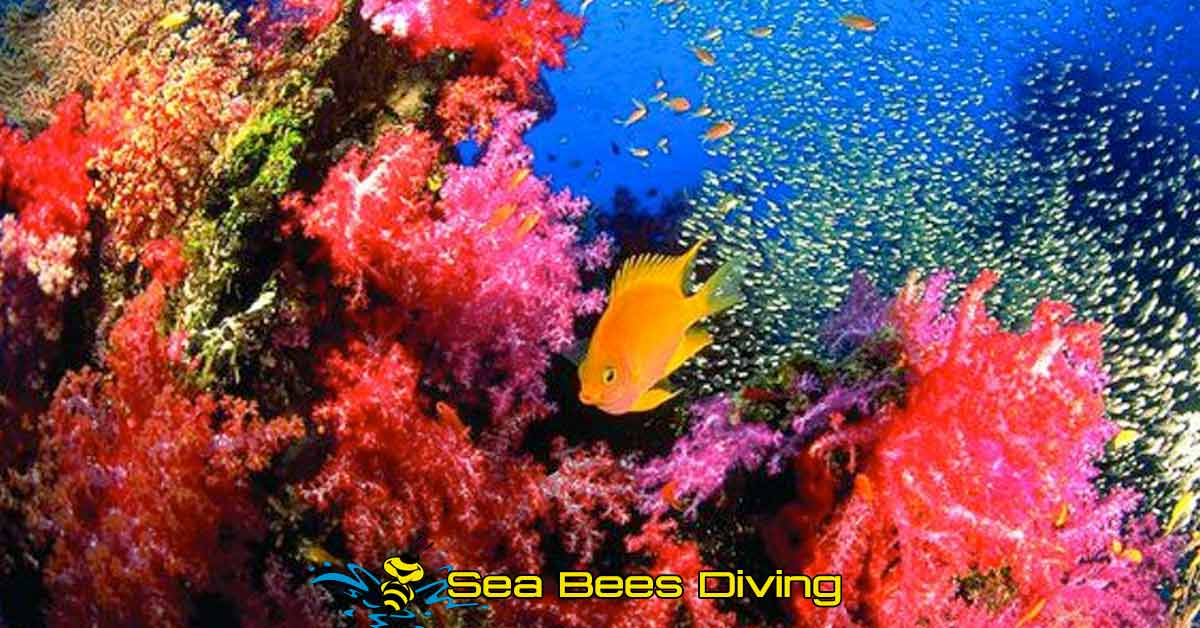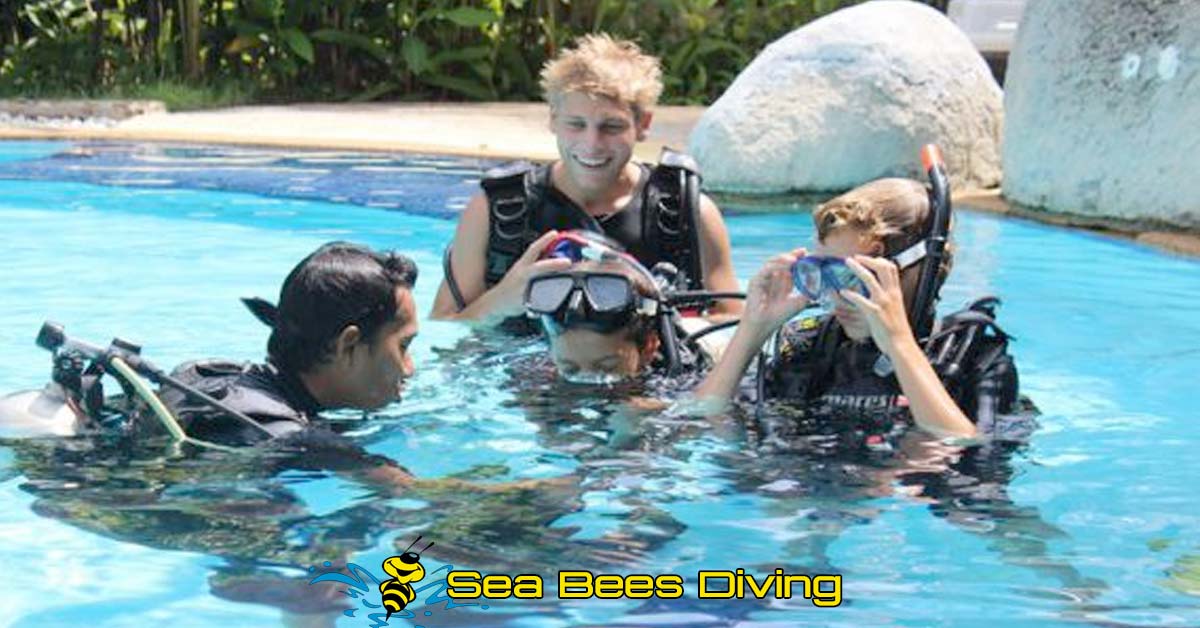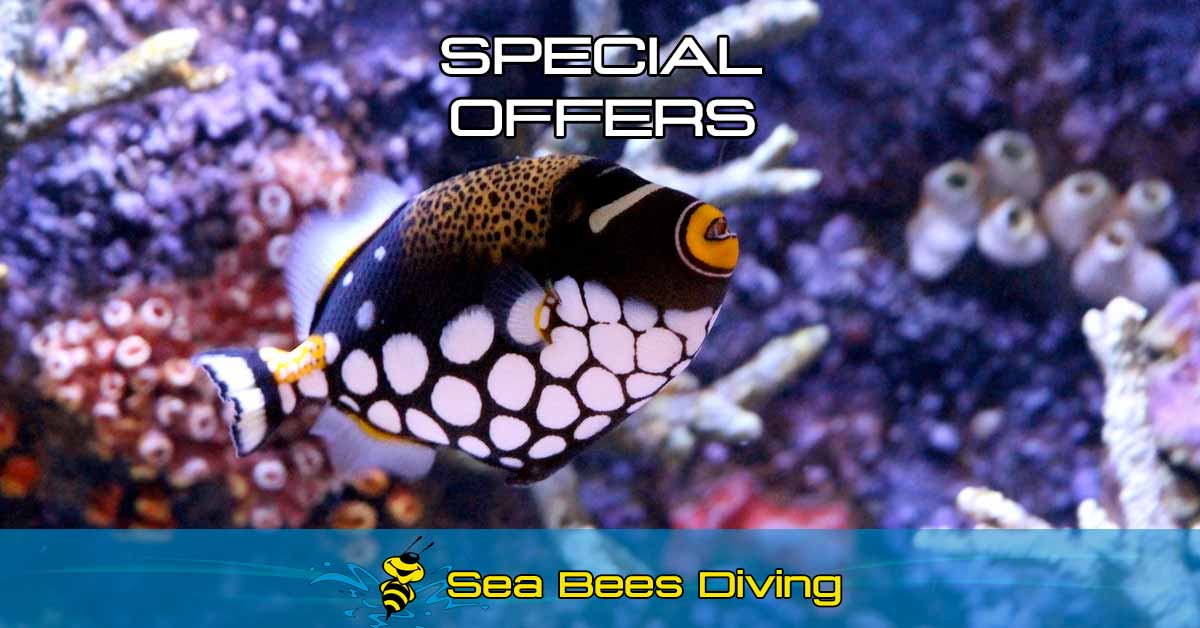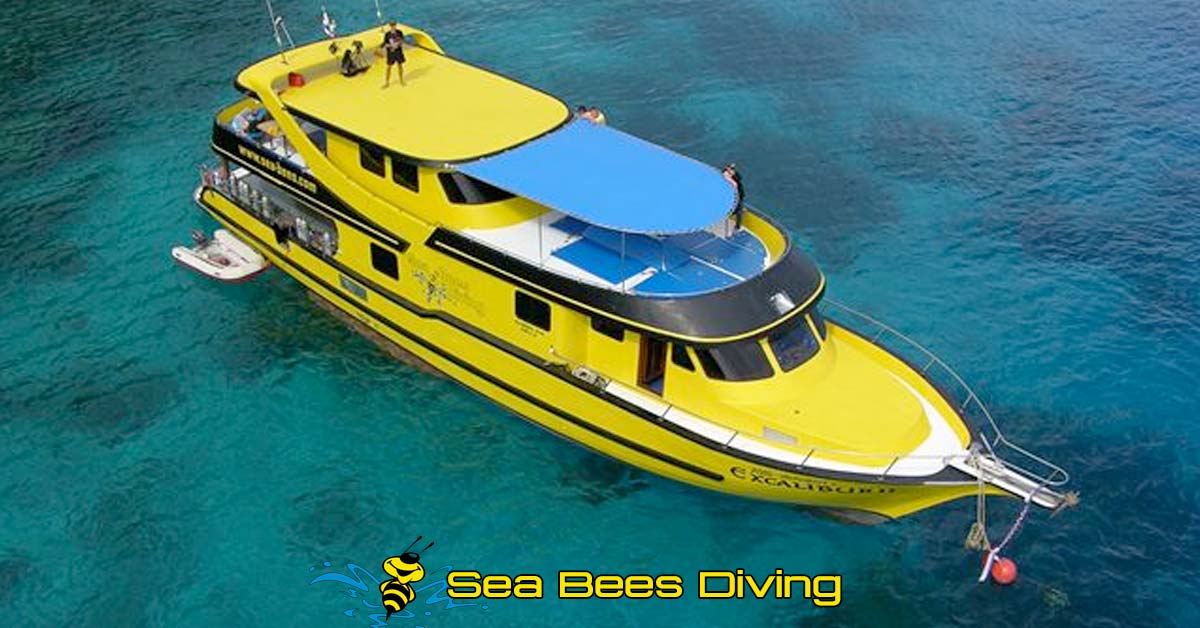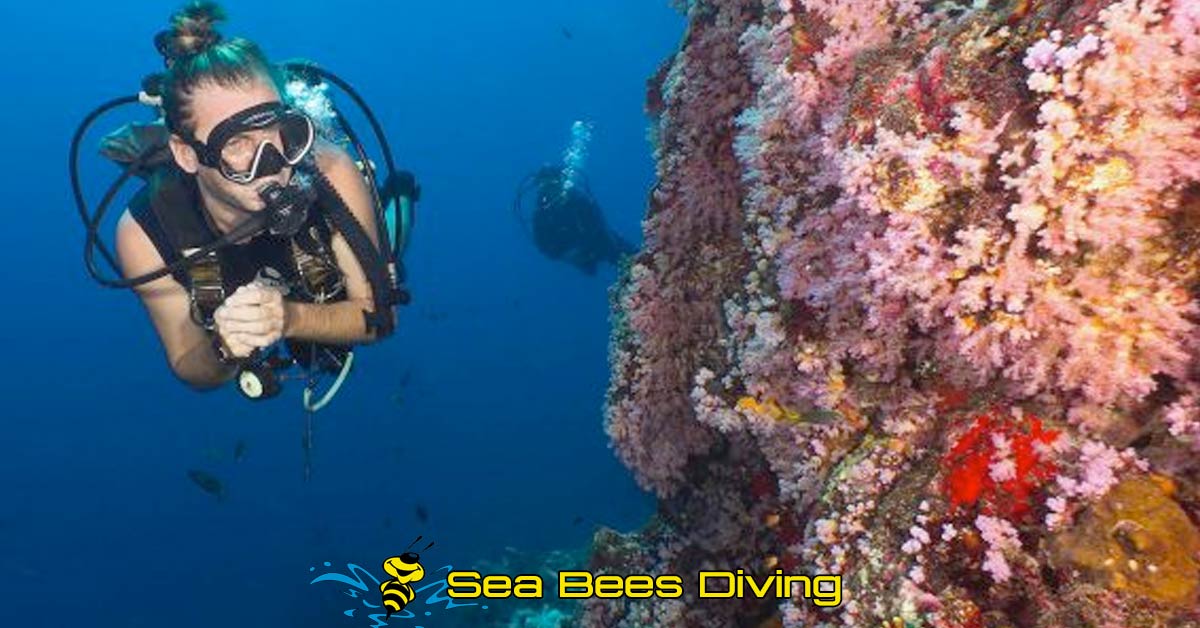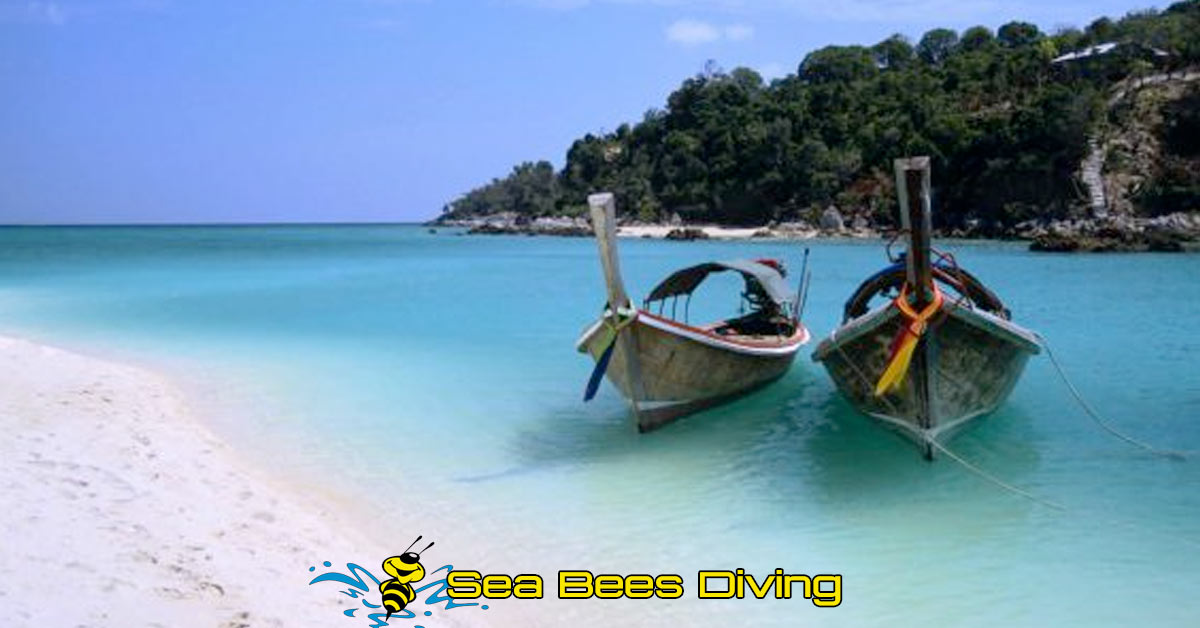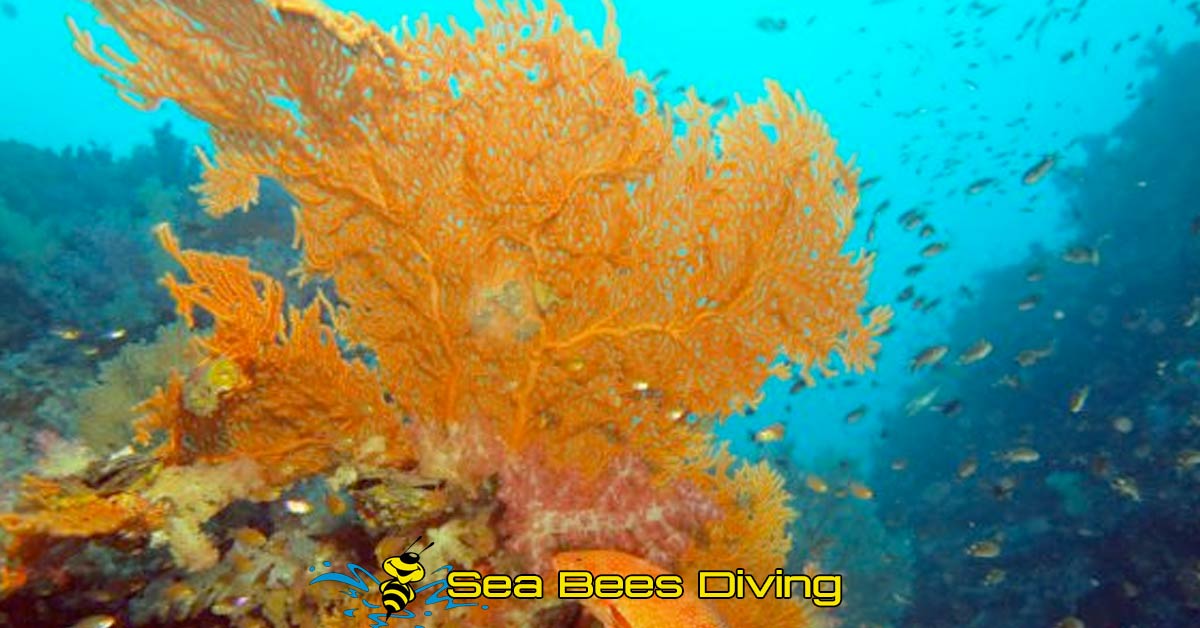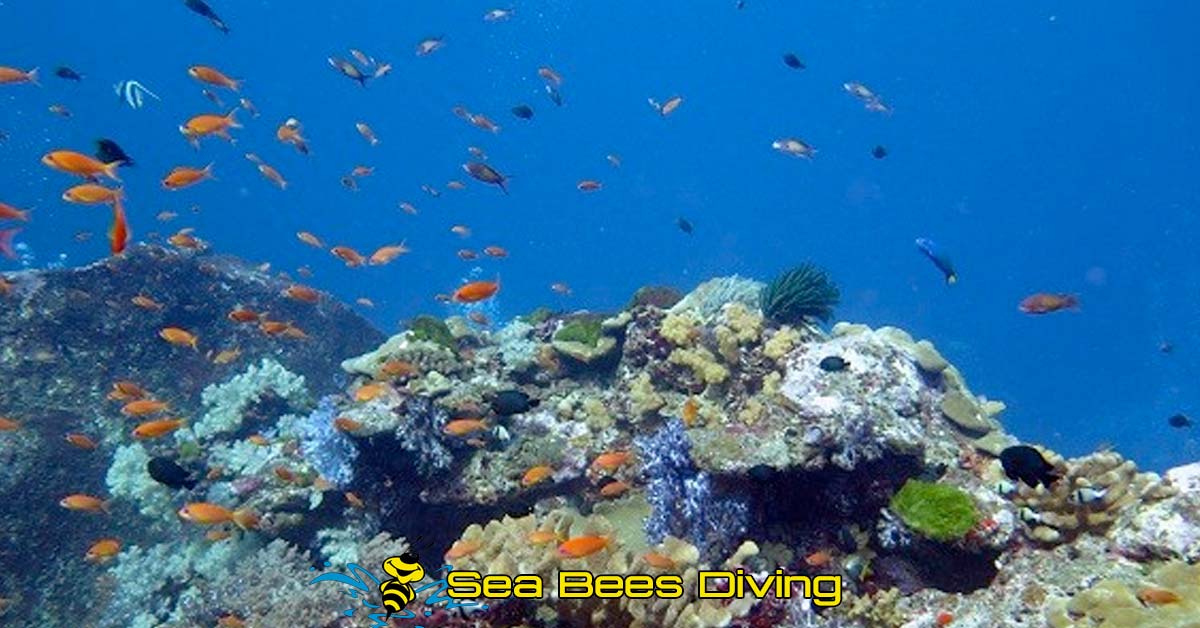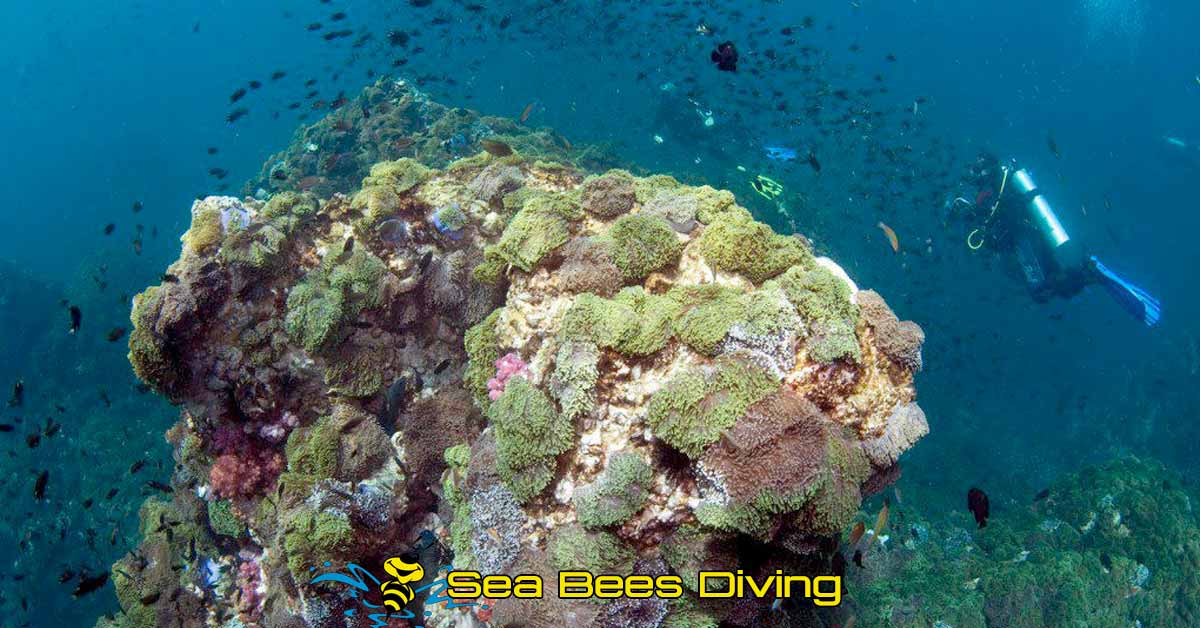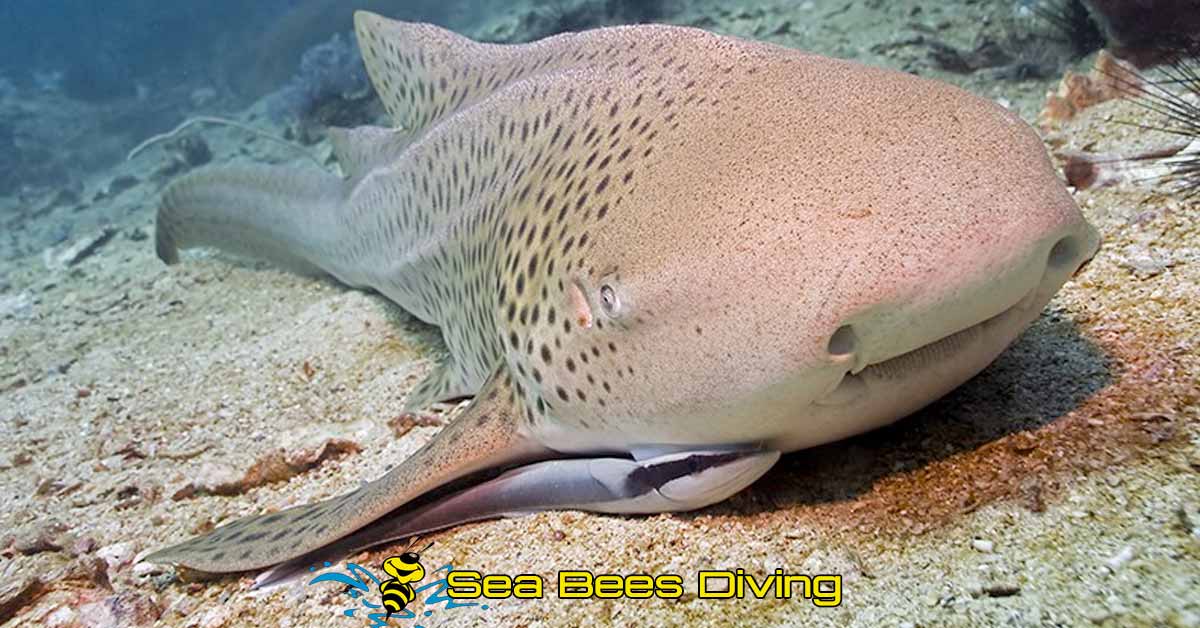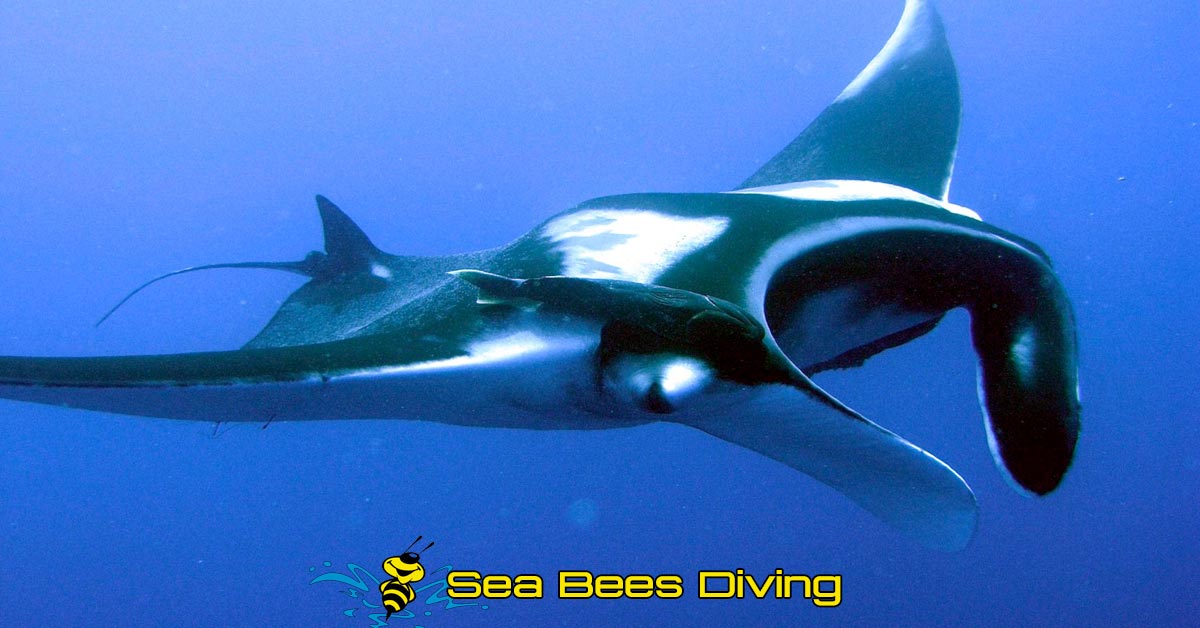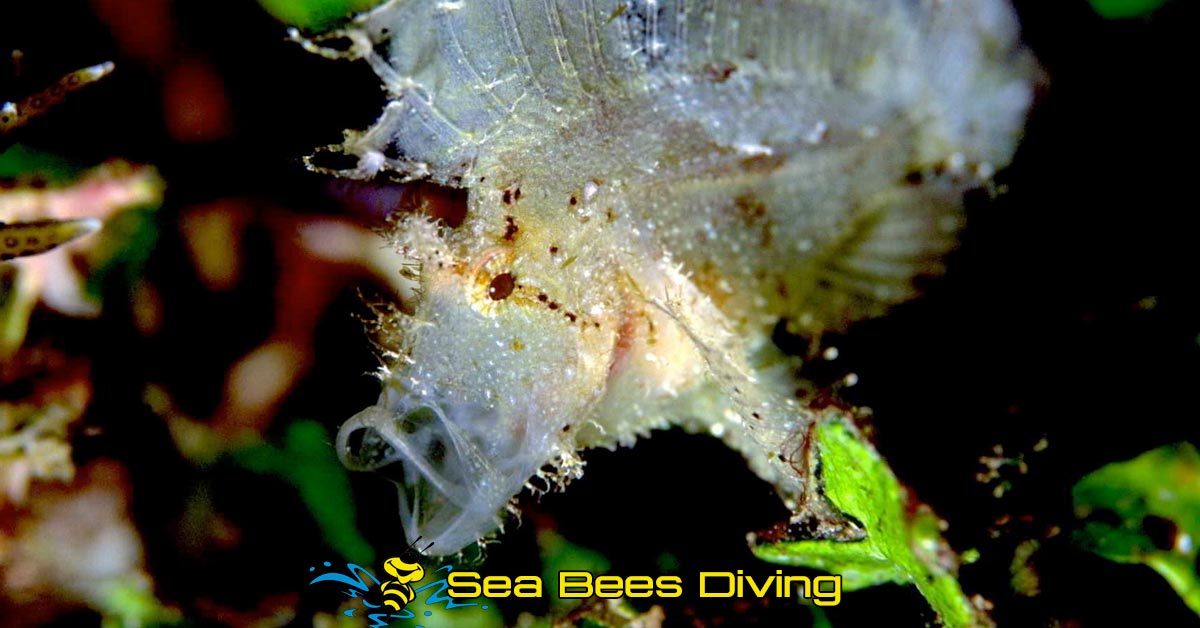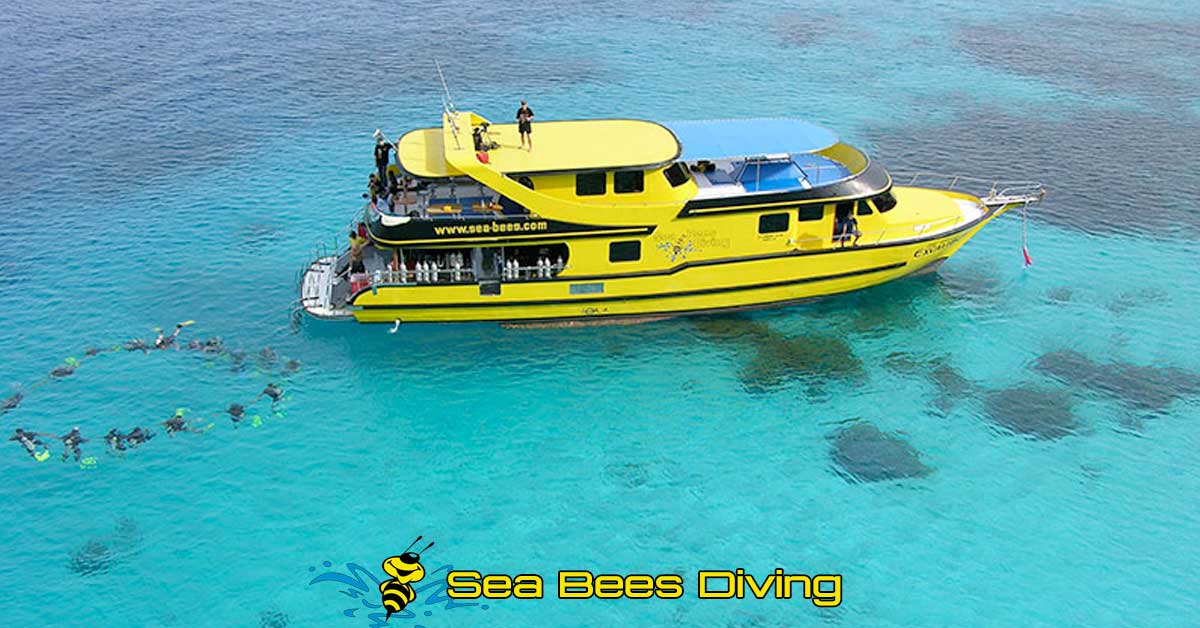Scuba Diving from Chalong and Nai Yang
Everything you need to know about diving in Phuket
Are you planning your next dive trip to Phuket?
Great! Let us show you what to expect when going on your scuba diving holiday in Phuket!
WHAT ARE YOU LOOKING FOR IN PHUKET?
WHAT TO EXPECT WHEN SCUBA DIVING IN PHUKET
Answers to the most common questions
![]()
Good to know about scuba diving in Phuket
In Phuket, the diving is mostly done as day trips by boat. This is due to the fact that most dive sites are located off shore and are only accessible by boat.
There are also a few dive sites which can be reached directly from the beach or with the longtail boat. But the most beautiful places are all a bit further away.
How is the water temperature in Phuket?
The Andaman sea is usually between 28 and 31 degrees Celsius all year round. During February and March sometimes nutrient rich currents swell up from the open ocean and bring "cold water" with them for a couple of minutes.
But it really never gets any colder than 25 degrees. Great side effect to these "cold currents" is that manta rays and whale sharks do follow them
When is the best time for scuba diving in Phuket?
Phuket is an all year destination for scuba divers. No matter the time of the year there is always some good diving to be enjoyed. However, the main diving season here is similar to the main tourist season of Thailand.
Usually, the best conditions for diving around Phuket are from November to April.
This is the time of the year when there is the least chance of rain and storms. The sea is mostly flat, sun is shining and the water is a beautiful blue.
The main tourist season is also the best time for liveaboard trips in Thailand.
How is scuba diving in Phuket during the rainy season?
During the rainy season from May to October there is a much higher chance of rains and thunderstorms.
However, this does not mean that it is rainy every day or weather is bad all the time. In fact there are many days in weeks where the weather is just as nice as during high season.
For divers both seasons are great as there is always something interesting to discover.
More information on diving during the rainy season can be found here.
How is the visibility underwater?
The visibility at the dive sites varies during the year and from site to site. Dive sites around Racha Yai and Racha Noi enjoy great visibility all year round. Mostly in the 20-30m range.
Dive sites like Shark Point, Anemone Reef and the King Cruiser Wreck offer a little less. Mostly in the 15m range, with the odd 25+ m day,
Overall, divers can expect decent visibility all year round
The dive sites around Phuket
Phuket’s dive sites have, on average, a maximum depth of 18 to 30 meters with difficulty levels from easy to medium. The dive sites inspire with steep walls, small caves and wrecks as well as impressive rock formations and coral gardens.
The Andaman Sea’s marine life is enormously diverse and also has, in addition to numerous tropical fish, some rarer species, such as seahorses and ghostpipe fish. Oftentimes during dives, leopard sharks can be spotted, and in some places even a manta will hover past.
And whale sharks, though rare, can not be excluded.
Some of the most popular dive sites around Phuket are:
Shark Point:
Shark Point is one Phukets best and most popular dive sites. It is located close to Anemone Reef and King Cruiser. So many daytrips will be a combination of these sites.
At Shark Point you can spot a great variety of schooling fish, soft corals, hard corals, mooray eels and plenty of colorful reef fish. It got its name from the Leopard Sharks and Bambook Sharks that are both frequently spotted around the coral bommies.
Anemone Reef:
Anemone Reef is a craggy rock formation that’s home to countless anemones and vibrant soft corals. A myriad of tropical fish can be seen, with one highlight being a gathering of lionfish.
King Cruiser:
The King Cruiser is a modern day ship wreck. Sunk on the 4th of May 1997, the wreck is now home to cuttlefish, crabs and barracudas; which you can spy while investigating the sun deck, dining room and captain’s cabin.
Racha Yai and Racha Noi
Racha Noi (the smaller of the Racha islands) is an uninhabited tropical island. The island has excellent dive sites for experienced divers and shallow bays for new divers and snorkelers.
Racha Noi offers almost limitless variety and the odd pleasant surprise if you spot one of the larger visitors to the islands, which could be stingrays or, their larger cousins, the Manta Rays
Racha Yai is the largest of the Racha Islands and plays host to a number of dive sites. A wide selection of hard and soft coral are found throughout as well as a vast variety of fish. In the deeper areas, Garden Eels and Blue Spotted Stingrays can be seen playing in the sand and with the occasional larger pelagics making an appearance.
How to dive the Similan Islands?
All dive sites of the Similan Islands are offered by Sea Bees either as a scuba diving daytrip from Khao Lak or one of our Thailand liveaboard tours.
Dive sites north of the Similan Islands
Koh Bon and Koh Tachai north of the Similans but also part of the same national park.
Dive sites north of the similans are only accessible during one of our Thailand liveaboards.
Despite being less well known than the Similan Islands they leave nothing to be desired.
In fact for many divers they are the actual highlights in this part of the Andaman Sea.
Koh Bon is a cleaner station
This attracts plenty of manta rays, which come here from January to May. During these months it is very rare not to encounter at least one of these gentle giants during your dive there.
But not only manta rays can be found here. Also the occasional whale shark, eagle rays, tuna, wahoo and other larger predators are a common sight.
But it's not only the bigger fish that divers love about this dive site. Soft corals here cover large parts of walls, the western part of the reef is full of hard corals and in between lives an incredible variety of reef fish, mooray eels, octopus and other interesting marine life.
Phi Phi Islands
Phi Phi is a collection of impressive limestone islands. The area is perfect for cave diving as a wealth of underwater life come for shelter and the dive sites offer you a good chance of spotting juvenile sharks as well as turtles. A wonderful opportunity to enjoy the surface and underwater landscapes at their best.
SCUBA DIVING DAY TRIPS IN PHUKET
![]()
A typical day of scuba diving in Phuket
All dive trips in Phuket take off from the port in Chalong. That is, no matter which hotel you stay at during your holiday in Phuket (and which dive center you are with) you will have to come to Chalong for diving.
Our dive base and also our diving center are only about 300m from the harbor and are therefore the ideal starting point for diving here in Phuket.
If you dive with Sea Bees, our driver will pick you up from your hotel in the morning and bring you safely to our diving base in the southeastern part of Phuket island. The transfer time is dependent on the location of your hotel (10 - 45 minutes)
After a short check-in at the base, we continue by minibus to the boat.
On board, our English-speaking instructors, our Thai crew and a freshly prepared breakfast await you. As soon as everyone is on board, the boat will leave and head to the first dive site.
Tip: As all dive trips start in Chalong, it would make sense when booking your Phuket diving holiday to choose a hotel, which is closer to Chalong.
Or you could stay in our comfortable dive resort which is only 5 minutes away from the main jetty and our Sea Bees Diving Phuket headquarters.
How we dive at Sea Bees
As safety and fun are our top priority, we always dive in small groups with a maximum of four divers per dive instructor or divemaster. If you prefer, you and your buddy can also explore the dive spots on your own after a detailed briefing.
Following the first dive, we perform an extensive surface interval of at least 90 minutes. Sufficient time for a tasty, freshly cooked lunch, a few cold drinks and relaxation on the covered sun deck.
After the second dive at another site, we will head back to Phuket. On the way, you can have a “deco-beer” or another drink from our diving bar. We are usually back at the port at 3.30 pm and then you will be taken to the base for a small refreshment and then back to the hotel in an air-conditioned minibus.
Our daily scuba dive trips
At Sea Bees, we use our comfortable 23m long dive boat, Excalibur 2, for day trips. The boat was specially designed for divers and has set new standards for diving in Phuket.
We have a fixed schedule for our day trips in Phuket and visit a different destination every day. We dive twice a day, on certain days even 3 times, and every Sunday we offer our Super Sunday, which consists of 3 day dives (twice at the Phi Phi islands) and a night dive
More offers for scuba diving in Phuket
In addition to the day trips, we also offer diving courses for beginners as well as diving instructors.
More information on dive courses in Phuket can be found here.
And if you prefer to go on safari on your diving holiday in Phuket then take a look at our Phuket liveaboard tours, which will take you in 6 days and 6 nights to the best dive sites of the Andaman Sea, the Similan Islands and further north to Koh Bon, Koh Tachai and the Surin Islands.
Have we awakened your interest in scuba diving in Phuket? Then send us a message right now, and we will send you an individual offer.
